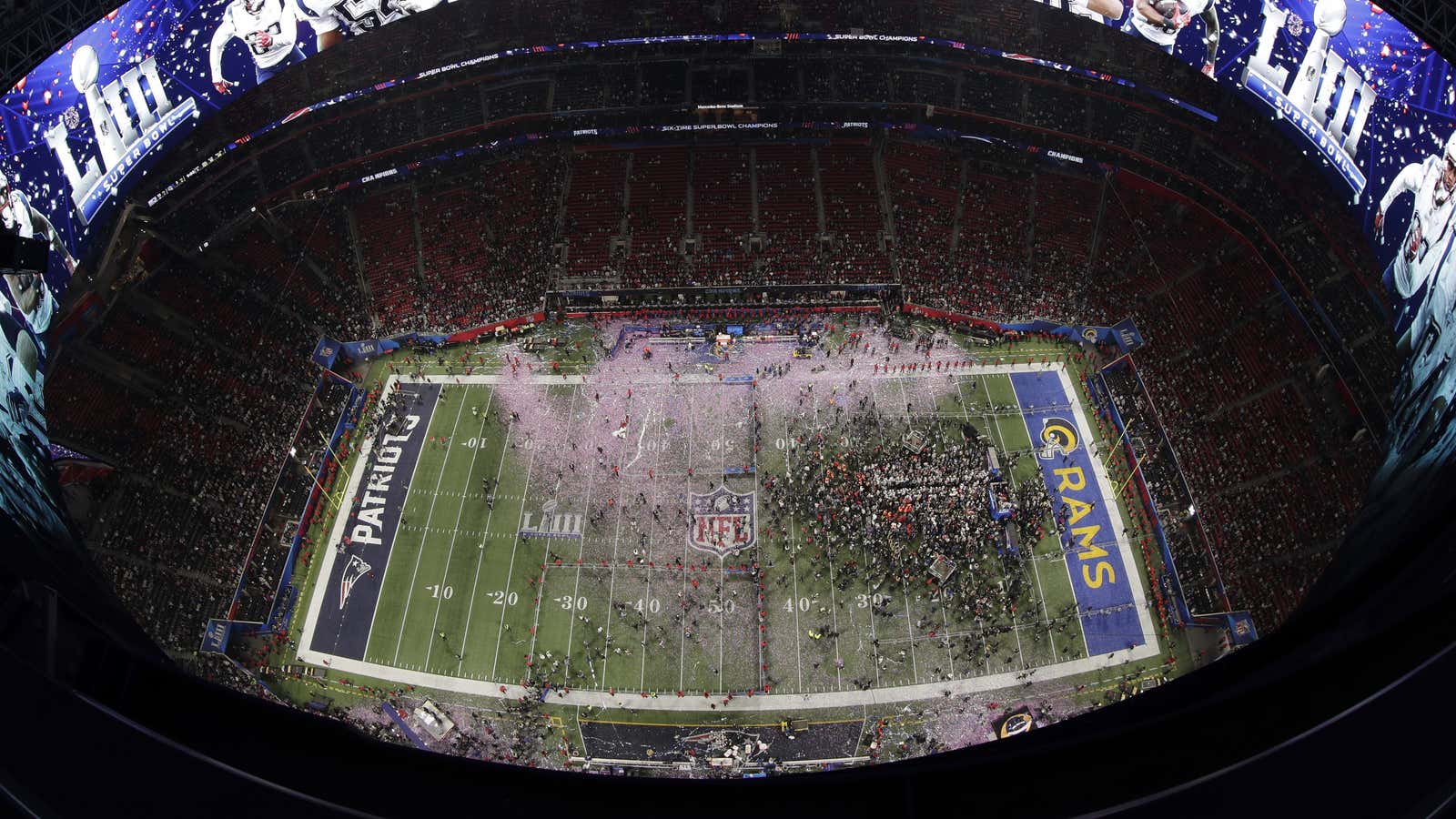This year’s Super Bowl is going to be more political than ever.
US president Donald Trump and Democratic presidential candidate Michael Bloomberg both purchased 60 seconds of national ad time during the Feb. 2 National Football League championship game, the New York Times reported. Fox, which will broadcast the game in the US, is reportedly asking more than $5 million per 30 seconds of ad time, putting the total ad buy at over $10 million for each politician.
The Trump campaign announced in November it would make the national ad buy for this year’s Super Bowl, marking the first time a presidential campaign will air in every household in the US tuning into the big game, Sports Business Journal reported. Previous candidates have run ads during the Super Bowl, but only in a select few states.
To counter the time Trump will have in front of 100 million Americans, Bloomberg’s campaign revealed yesterday it bought 60 seconds worth of its own Super Bowl ads. “The biggest point is getting under Trump’s skin,” Michael Frazier, a spokesman for the Bloomberg campaign, told the New York Times. It’s unclear if the ad buy is for a single 60-second ad or for some combination of 30- and 15-second commercials.
Bloomberg, the billionaire former mayor of New York City, is able to buy the pricy ad because he is financing his campaign with his own money. Trump will pay for his ad with the millions he’s raised with the help of the Republican National Committee during his campaign for re-election. The campaign says it has about $100 million at its disposal.
As audiences become fractured across platforms, the Super Bowl’s unparalleled advertising potential has become more important than ever. Nearly 100 million Americans watched the broadcast last year. A record 114 million US viewers tuned into the 2015 contest between the New England Patriots and the Seattle Seahawks, a thrilling game decided in the final seconds. Companies—or, in this case, politicians—can’t get that kind of audience anywhere else.
According to researchers at the University of Wisconsin, companies that air ads during the Super Bowl outperform the S&P 500 in the week following the game, while films that debut Super Bowl trailers often get a small boost at the box office. A Super Bowl ad is both the most expensive and arguably most valuable 30 seconds of television that exists. For the price of a 30-second ad this year, you could finance an entire 60-minute episode of most prestige TV series.
No previous campaign ads aired during the Super Bowl came close to the reach of Bloomberg’s and Trump’s. In 2016, Republican presidential candidates Jeb Bush, Ted Cruz, and Marco Rubio all aired ads during the game, but they were shown only in certain early primary states like New Hampshire and South Carolina.
The closest comparison might be in 2008, when then-candidate Barack Obama aired a Super Bowl ad in 24 states. That same year, he bought $5 million worth of national ads during the Summer Olympics in Beijing. Obama wound up winning the election over John McCain by a decisive margin, garnering the highest vote total in American history.
